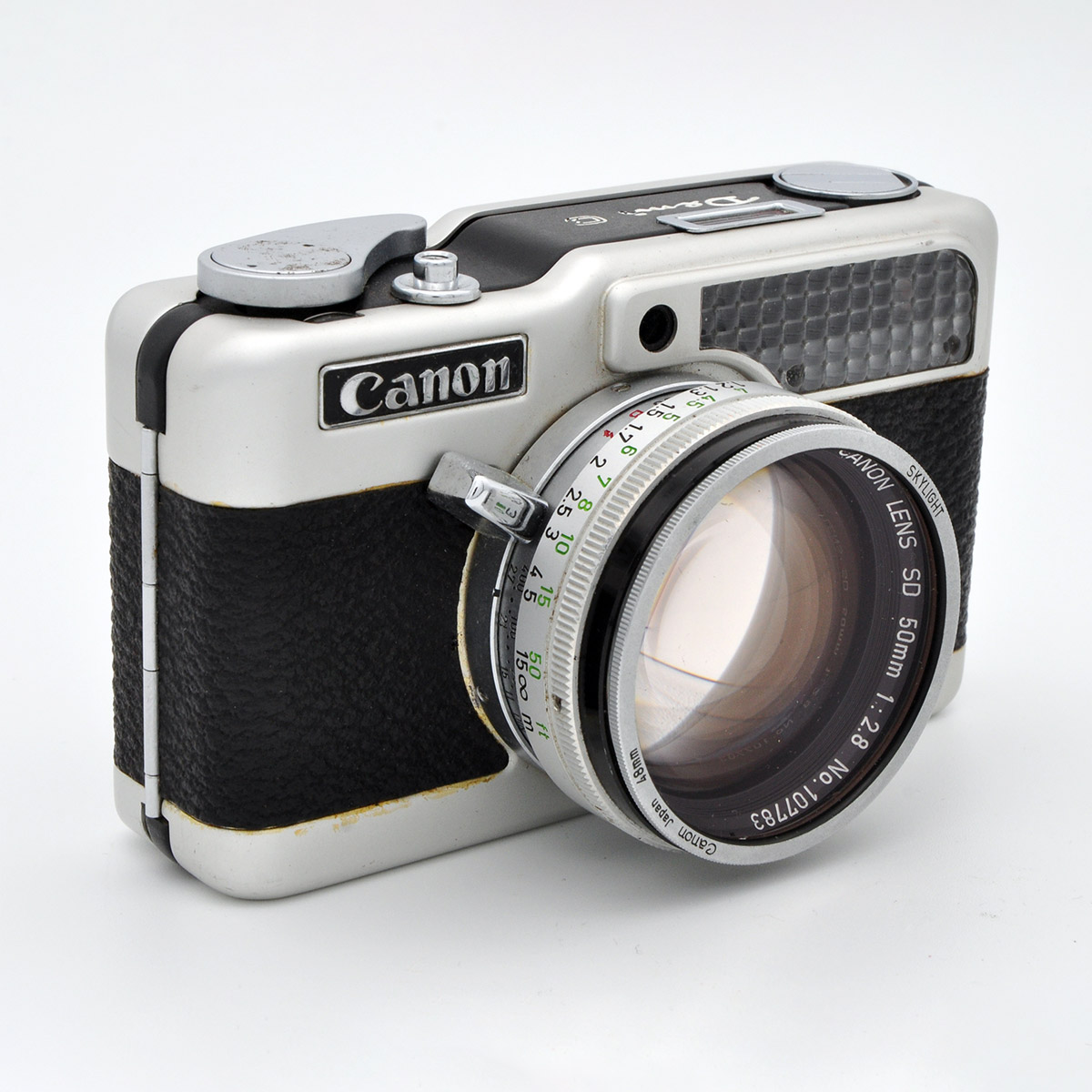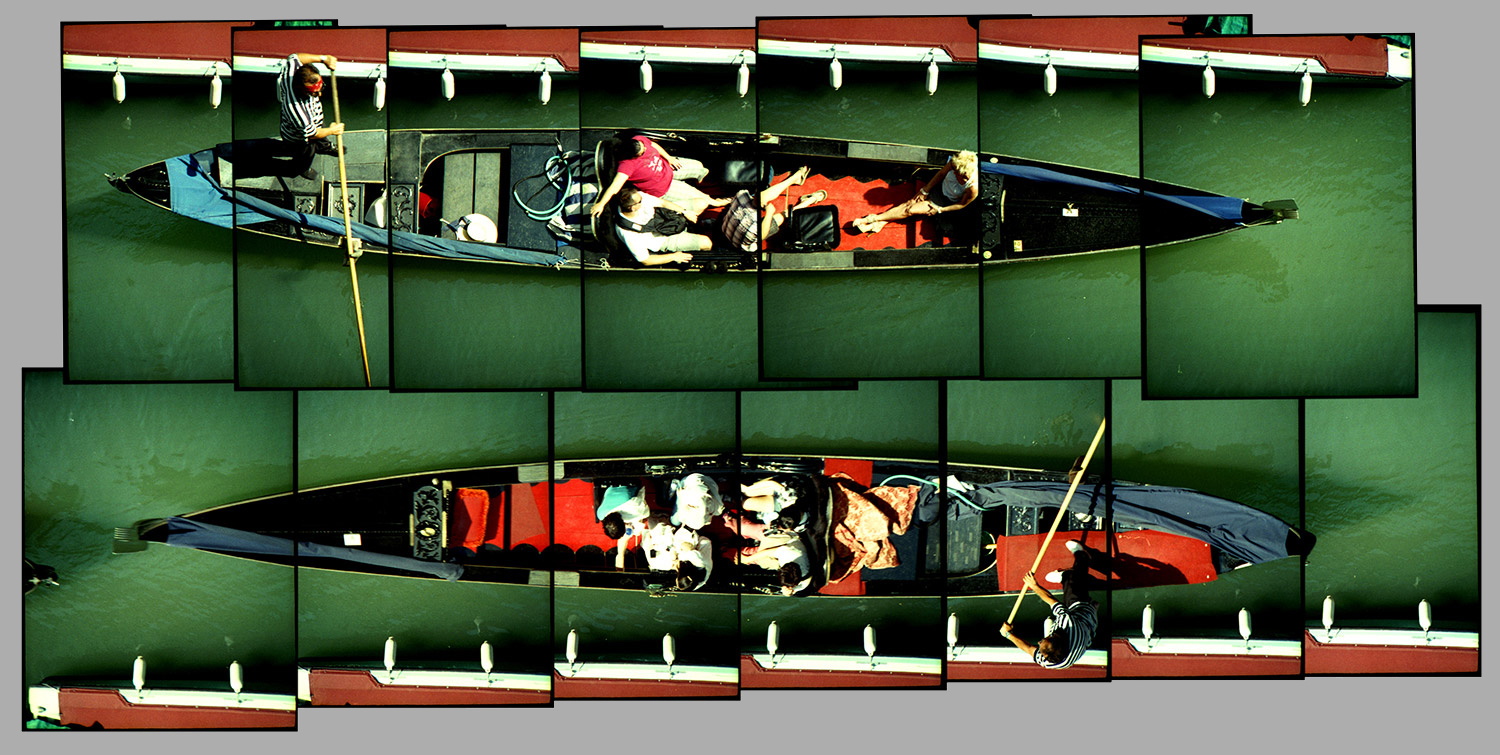Canon Demi-C
“How much are the snooker balls mate?”
“They’re tomatoes!”
I overheard that exchange at the car boot sale, and it sums up perfectly how things are not always what they seem at first glance. As I plough the bootfield on a Sunday morning, I’m constantly scanning the goods on display, looking for clues that might indicate an old camera. Disappointment is the norm, the quickening of the pulse brought on by seeing the word “Zeiss” on a case soon settles when it’s opened to reveal nothing but a few used flashbulbs!
I’ve learned over the years, that many items came in leather cases in the olden days (as my kids would put it), hairbrushes and shaving sets seem to occur most frequently, and when I spotted a small curved, zipped black case, my first guess was that it would contain a small bottle and a couple of glasses, the fear of being too far from a source of alcohol having spawned a whole industry of portable drinking apparatus over the centuries.
Seeing the word “Canon” on the front of the case however, sharpened my focus, and I lifted the lid to find a camera and an extra lens in a neatly fitted compartment.
One of the things I like about collecting old cameras is that there will always be models that I never even heard of, and this was one of them. I was vaguely aware of this half-frame range, but hadn’t known that there were any that had interchangeable lenses. Later research revealed that it was made in 1966, and that there were only two lenses made, the 25mm standard, and a rather nice 50mm f2.8 “telephoto” (pictured). Although I hadn’t handled the Demi-C before, I know enough about cameras to work out what was working and what wasn’t, the absence of a battery compartment confirmed that the built in exposure meter was of the Selenium variety, so would be simple to test.
The needle did move when pointed towards the sun, but only momentarily, most likely due to a loose or corroded connection inside. The seller wanted £10 for it, and I decided I’d leave it for someone else. Experience has taught me that if you want something at a bootsale, you should buy it straight away, if you hesitate and go back for a second look, the chances are you either won’t find it again or it will have been sold. Ploughing on through the next couple of rows of stalls, my mind kept going back to the Canon, and reasoning that I could still use it even with a faulty meter, I went back for a second look. It was still there, and by now there were a few spits of rain in the air, so we settled on £7 and that was the beginning of a beautiful friendship.
Half-frame cameras take twice the number of pictures as full frame, so you get 72 photos if you’re using a 36 exposure cassette. The format became popular in the post war years, when film was still very expensive, and any way to eke out extra photos was to be welcomed. Aside from focussing, the only control is a single lever which sets a combination of shutter speed and aperture based on the position of the exposure meter’s needle. This one’s meter has an intermittent fault, but luckily the actual lever is moved by hand, so it’s easy enough to position it where it should be.
I like it because the portrait format of the frames allow me to take sequences of photos to make an interesting composition; this column goes under the banner of “The Final Frame”, but I sometimes like to extend my composition even beyond the frame, looking for subjects where the inclusion of the sprocket holes in the final image might complement the content. The black and white Tudor frontages in Shrewsbury looked like a promising subject, so using Rollei Retro 100 film I took this series of shots.
The Canon is one of my favourites, I’ve probably used it more times than most of my film cameras, and each time I do, I can’t help wondering how many broken teeth dentists see as a result of people mistakenly biting into a nice juicy snooker ball…


